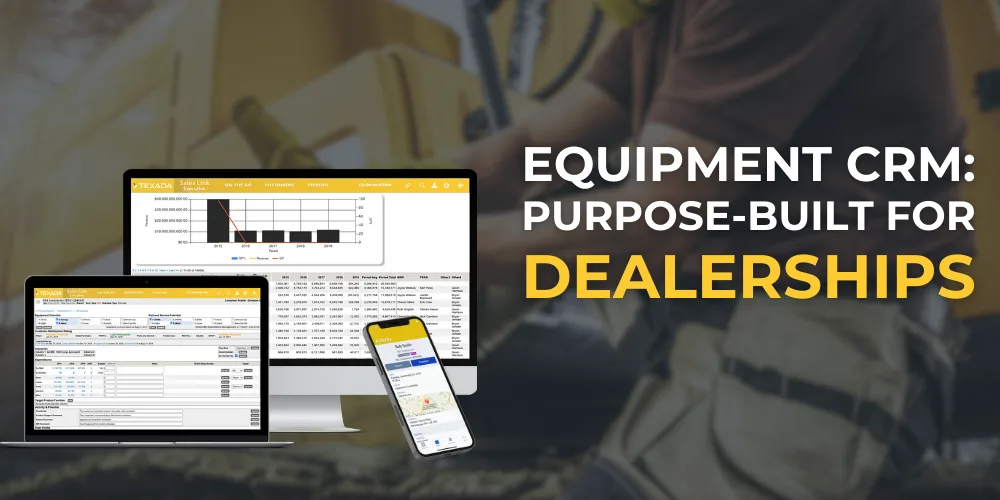In the complex domain of the equipment rental industry, the term ‘data’ is foundational, denoting the raw, unprocessed numbers and facts that companies use daily. This data encompasses a broad spectrum of variables, including the specifications of equipment stock, the current availability status of machinery, and meticulously maintained maintenance records.
The fuel powers decision-making engines, informing strategies to optimize operations and boost customer satisfaction. Join us as we delve into the distinction between mere data and actionable information in the context of equipment rental, where data transformation into invaluable insights becomes the cornerstone of achieving a competitive advantage.
Information: The Refined Value of Data
In equipment rental, it’s crucial to differentiate between raw data and information. While the former represents the unprocessed figures and facts collected from various business operations, information is that same data organized, processed, and refined into a format understandable and actionable for decision-makers within the company.
Transforming Data into Actionable Insights
Data transforms into valuable information after undergoing a process of analysis that filters out the noise and extracts the essence necessary for informed business decisions. The equipment rental sector involves studying customer behavior patterns, equipment usage rates, maintenance schedules, and financial transactions to improve efficiency and customer satisfaction.
By applying the right analytical approaches and tools, rental companies can move beyond mere data collection to generate strategic insights that drive their business forward.
- Data Curation: Gathers and prepares data for analysis.
- Data Analysis: Interprets figures to extract meaningful patterns and trends.
- Data Visualization: Presents information visually, making the derived insights readily comprehensible.
- Information Dissemination: Distributes the insights to the right stakeholders for timely action.
Therefore, the transformation from data to information is not just a technical process but a strategic one, enabling rental businesses to harness their data’s full potential and make smarter, more proactive decisions.
The Significance of Data Management for Equipment Rental Businesses
Effective rental data management is not just a routine administrative task; it is critical for the longevity and success of any equipment rental business. Proper rental data management ensures that all equipment inventory is meticulously maintained and tracked, enabling businesses to optimize usage and minimize downtime. It can be the difference between thriving and surviving in today’s competitive market.
| Aspect | Details |
| Significance | Effective rental data management is crucial for the longevity and success of any equipment rental business. It ensures meticulous equipment inventory tracking and maintenance, optimizes usage, and minimizes downtime, which is vital for staying competitive in the market. |
| Impacts on Inventory Accuracy | Proper rental data management allows companies to maintain an accurate inventory and swiftly identify the status of equipment (rented out, due for maintenance, available for new contracts). It prevents booking overlaps and ensures customer satisfaction and retention. |
| Influence on Sales and Service Quality | Thorough data management significantly influences sales and service quality. Reliable data enables companies to forecast demand, adjust pricing dynamically, and identify sales trends, leading to tailored marketing strategies and informed decision-making that drive sales growth. |
| Sales Forecasting | Analyzing rental patterns and historical data helps predict future demand, ensuring better inventory availability and reduced over- or under-stocking. |
| Dynamic Pricing | It supports dynamic pricing models, allowing businesses to adjust rates based on demand, seasonality, and other factors and maximizing profits by optimizing rental prices for seasonal fluctuations and peak times. |
| Trend Analysis | Identifying trends in equipment usage enables companies to invest in popular items and phase out less in-demand items, maintaining a competitive edge. |
| Customer Service | Well-managed rental data improves service quality by providing employees with immediate access to accurate information, enabling effective and efficient customer service, enhancing the customer experience, and strengthening the company’s reputation. |
| Overall Significance | Data management in the equipment rental industry is the backbone of strategic decision-making, efficient operation, and customer satisfaction. Companies that master rental data management will emerge as market leaders, particularly as business environments become increasingly data-driven. |
From Rental Data to Strategic Power
Transforming vast amounts of rental data into actionable insights is at the forefront of strategic decision-making for rental operations. In today’s fast-paced market, the ability to quickly analyze and respond to data can be the difference between stagnation and growth. Information extracted from rental data empowers businesses to anticipate market trends, optimize operations, and, ultimately, gain a competitive edge.
The role of analytics cannot be overstated when it comes to improving the efficiency of rental equipment. By harnessing the power of data analytics, companies can identify patterns, predict equipment maintenance needs, and reduce downtime. This proactive approach boosts operational efficiency and enhances customer satisfaction and loyalty.
By leveraging the refined information from rental data, companies can drive strategic initiatives that propel their business forward. The data becomes a strategic powerhouse, guiding leadership teams in making informed decisions that align with long-term business objectives.
Pro Tip: Embrace predictive analytics to optimize equipment maintenance schedules and minimize downtime.
Key Performance Indicators for Equipment Rental Companies
Monitoring KPIs is critical for equipment rental companies to ensure business success and sustainability. These metrics offer valuable insights into the company’s sales performance, financial health, and operational effectiveness. Realizing the right indicators enables rental businesses to make informed decisions to enhance profitability and customer satisfaction.
Critical Metrics for Rental Businesses
- Utilization Rate: This measures the proportion of time rental equipment is in use versus the time it is available for rent. An optimal utilization rate indicates the fleet is effectively managed to maximize revenue.
- Rental Revenue: Tracking the total income generated from rentals directly indicates sales performance. Trends in this metric help identify peak demand periods and inform inventory decisions.
- Average Transaction Value: The average revenue earned per rental transaction can indicate customer spending behavior and assist in formulating pricing strategies.
- Equipment Maintenance Costs: Regular analysis of maintenance expenses helps schedule services and replacements, reducing downtime and extending equipment life.
- Customer Retention Rate: Measuring customer loyalty and satisfaction is crucial as retaining existing customers costs less than acquiring new ones. A high retention rate often indicates a positive customer experience and product reliability.
- Return on Investment (ROI): By comparing an equipment item’s revenue to its cost, companies can gauge the profitability and make informed procurement and disposal decisions.
Evaluating these KPIs provides actionable information that rental companies can use to streamline operations, optimize inventory, and improve overall performance. Emphasizing these metrics underscores their role in offering insights that contribute to better sales results and installation efficiency, thus propelling companies toward strategic growth and market leadership.
The landscape of fleet management is rapidly evolving, with data-driven strategies now at the core of effective and efficient operations. For equipment rental companies, leveraging the power of data analytics is critical for optimizing fleet utilization and ensuring that vehicles and machinery are deployed in the most productive manner possible.
Optimizing Fleet Management with Data
In an industry where assets are the cornerstone of success, accurately monitoring fleet utilization cannot be overstated. By collecting and analyzing rental data, companies can gain invaluable insights into usage patterns, equipment performance, and operational bottlenecks. This information enables managers to make informed decisions on purchasing, maintaining, and retiring assets, ensuring each piece of equipment generates maximum return on investment.
Maximizing Service Delivery Efficiency Through Analytics
The role of analytics in enhancing rental service delivery is pivotal. Advanced data analysis tools can predict demand, adjust pricing dynamically, and even automate scheduling and dispatching. By implementing a robust analytics framework, rental businesses can improve service delivery, ensuring customers receive the right equipment at the right time and location, thus heightening overall satisfaction and loyalty.
- Predictive Maintenance: Anticipating maintenance issues before they arise minimizes downtime and extends the lifespan of machinery.
- Inventory Optimization: Data insights help manage inventory levels, reducing the underutilization or overstocking of equipment.
- Usage Analytics: Understanding how and where equipment is used can better position the fleet across different regions or job sites.
Deploying a data-driven approach streamlines operations and gives rental companies a competitive edge. In the quest for operational excellence, embracing analytics is no longer an option but a necessity for those aiming to thrive in the equipment rental market of tomorrow.
Securing Equipment Rental Data in a Digital Age
Data security and privacy are paramount in equipment rental, especially as transactions and operations are digitized. With the burgeoning necessity to protect sensitive information from potential breaches, rental companies face the critical responsibility of implementing robust digital safeguards.
Protecting Sensitive Digital Transactions
Equipment rental companies must adopt comprehensive security measures to maintain the integrity of their business and the privacy of their clients. These measures should encompass the physical security of servers and devices and cybersecurity protocols to shield against unauthorized access and cyber threats.
- Encryption: Utilizing advanced encryption technologies ensures that data transmitted across networks remains secure from interception or eavesdropping.
- Access Control: Rigorous access control mechanisms grant permissions exclusively to authorized personnel, minimizing the risk of internal misconduct
- Regular Audits: Regular security audits can uncover vulnerabilities and address them promptly before they are exploited.
- Up-to-date Software: Keeping software up-to-date with the latest security patches is crucial in defending against emerging cyber threats.
- Data Backup: Regularly backing up data ensures that business continuity is not jeopardized in the event of a breach or data loss.
By prioritizing these initiatives, rental companies can foster a secure environment for their digital operations, instilling confidence among clients and stakeholders in protecting their information. As the digital landscape continues to evolve, the measures taken to secure rental data today will pave the way for a resilient and robust future for the equipment rental industry.
Pro Tip: Secure equipment rental data with encryption, strict access controls, regular audits, up-to-date software, and reliable data backups to protect against cyber threats and ensure business continuity.
Overcoming Obstacles in Data-Refined Strategy
When harnessing the full potential of equipment rental data, companies often face significant hurdles in data gathering and interpretation. One of the main challenges is ensuring that the data collected is relevant, accurate, and timely. Inadequate data can lead to poor decision-making, ultimately impacting the bottom line of rental businesses.
Furthermore, interpreting vast amounts of raw data can be daunting. Transforming this data into meaningful information requires a robust strategy and analytical tools. Equipment rental companies must adopt a proactive approach to address these challenges.
Strategies for Quality Data Capture
- Data Governance Practices: Implementing strict policies ensures that captured data follows precise standards and methods, leading to higher-quality datasets.
- Advanced Software Solutions: Investing in sophisticated rental data analytics software can help companies efficiently process and interpret data, extracting valuable insights.
- Staff Training: Ensuring that staff are thoroughly trained in data collection and input procedures can greatly reduce errors and enhance the reliability of the data gathered.
- Regular Audits: Conducting periodic audits allows companies to identify and rectify inconsistencies or gaps in their data, ensuring validity and relevance.
By navigating through these obstacles and employing effective strategies for data refinement, equipment rental businesses can leverage the full power of their data, leading to optimized operations and increased competitiveness in the marketplace.
Synergizing Customer Data with Business Goals
Integrating customer data into business strategy for equipment rental companies is more than just a logistical step; it is a strategic imperative. By synergizing customer data with overarching business goals, companies can unlock a new frontier of enhanced decision-making and tailored service offerings.
Strategic Integration of Customer Data
Customer data encompasses a wealth of information, from the frequency of rentals to the types of equipment most commonly leased. This data can help refine marketing tactics, improve customer service, and drive revenue growth when effectively integrated with a company’s strategic objectives. By understanding customer behavior through data, businesses can anticipate market demands and adjust their offerings accordingly.
Utilizing Feedback and Rental Patterns
Customer feedback is a golden resource for any service-oriented company. When feedback is meticulously reviewed and acted upon, it can lead to significant improvements in service quality and customer satisfaction. Likewise, analyzing rental patterns can uncover trends that may inform new service offerings or suggest adjustments to existing inventory. These insights allow equipment rental companies to remain competitive and responsive to market needs.
- Enhancing Customer Experiences: By monitoring customer preferences and feedback, companies can tailor the rental experience to meet the specific needs of different market segments, ensuring a competitive edge.
- Aligning Inventory with Demand: Rental patterns provide crucial data to guide procurement strategies and inventory management, ensuring the right equipment is available at the right time.
- Informed Decision-Making: Data-driven decisions are key to maintaining a robust and dynamic business model that can adapt to changing market conditions and customer requirements.
In conclusion, the synergy between customer data and business goals is a powerful combination that can propel equipment rental companies forward. By leveraging this relationship, companies can improve their service offerings and position themselves for sustained success in an increasingly data-driven industry.
Pro Tip: Leverage customer data to enhance service quality and drive revenue growth. Monitor rental patterns and customer feedback to align inventory with demand, tailor offerings to customer preferences, and make strategic decisions that ensure competitive advantage and customer satisfaction.
Empowering Your Equipment Rental Decisions: Data versus Information
All companies have data; as your company grows, so does your data collection.
However, collecting data is only half the battle. You also need to be able to understand and interpret that data and turn it into actionable information.
If you aren’t collecting data correctly, all that analysis work will be in vain. So, how can you ensure that all the numbers you use represent your company at the present moment while still giving insight into your history and future?
Well, capturing field data in real-time is the only reasonable solution. Thanks to the advantages that the internet and technologies give us today, this is possible—you just need the right partner for this journey. You can collect, store, and organize your numbers, synthesizing your raw data into easy-to-understand information without complicated data analysis models.
With Texada, gathering data and interpreting information has never been easier. If you’re ready to up your information game, click the button below to talk to one of our reps!
Key Takeaways
- Effective data management in equipment rental involves transforming raw data into refined information that drives strategic decision-making and operational efficiencies.
- Proper rental data management ensures accurate inventory tracking, minimizes downtime, and enhances customer satisfaction by optimizing equipment availability.
- Analyzing rental data enables companies to forecast demand, adjust pricing dynamically, and identify trends, empowering them to make informed decisions that drive sales growth.
- Securing rental data is crucial in a digital age to protect against breaches. Integrating customer data strategically enhances service offerings and aligns inventory with market demand.





